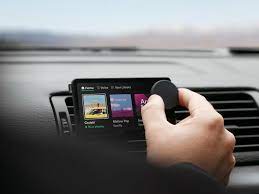Windows is probably the most consequential software ever made. It’s for almost four decades, it has been running a computer that we use to learn, make, defend our country, heal that is sick, and see funny cat pictures. Windows has become the dominant operating system throughout the world for most of its history.
Windows is probably the most consequential software ever made. It’s for almost four decades, it has been running a computer that we use to learn, make, defend our country, heal that is sick, and see funny cat pictures. Windows has become the dominant operating system throughout the world for most of its history.
In the early 1980s, Bill Gates and the software company, Microsoft, has held a large market share of the operating system run on desktop computers, MS-DOS, often shortened to DOS. DOS is a capable operating system, but its structure is a text-based user and is needed to find out at least some basis for running it. Most of the only text functions and programs that often need some basic understanding of DOS programming to benefit the average user.
The development of the window brings fundamental changes in how we interact with this computer and lower the learning curve to use one outside the box. The user interface of the mouse and graphics, or GUI, opened the world of opportunities for less intelligent computer users, many in the pre-internet era. While Windows does not mean the only GUI-based operating system, it is and is the most extensive operating system used. Bill Gates helped deliver the era of extensive adoption of desktop computers and many changed in the year since. Windows has evolved and has been updated every few years and see each version of the release shows the transformation of Windows 1985-2022.
Released in 1985, Microsoft Windows 1.0 faces a long battle uphill to market dominance. When Reagan began his second term, the Soviet Union still had strong grasp on iron curtains, and Macintosh was the most famous computer with GUI, Microsoft needed to work hard to make a breakthrough to the user of the core product at the time, business users. Most companies have DOS who rooted into their IT departments and managers and end users do not want to spend training time on a new system. In the threshold retrospect starting 2012, when Windows arrives, many in the industry have written it as a vaporware, it has never been seen on any monitor.
Microsoft introduces its new GUI for $ 99, including a very necessary tool as Windows Paint, Notepad, Calendar, and Reversi Game. Version 1.0 is not only based on DOS, needed for installation and seen at that time as a tool to manage various applications and tasks carried out by a computer. An initial review in the 1984 byte magazine highlighted its ability to multitask
keeping the program open among several windows at once, delete the need to end and restart the program between tasks such as norms with DOS. However, broad Windows adoption has not yet arrived, and even though the New York Times considers Windows Windows Dead in 1984, version 1.0 only gives a glimpse of what Microsoft can do with the new operating system.
Just as death and tax, in modern times we have software updates. With Moore Law, the term roughly illustrates the way semiconductors grow exponentially stronger every few years, basically, our engine software runs continuously behind the new engine capabilities, requires the need to improve software on the basic regular. Windows 2.0 increases the original with new features, functions, and capabilities as the original fails to get a lot of traction on the market.




Average Rating